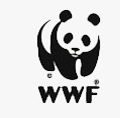Introduction
Efforts to create a national inventory of Greek wetlands begun in 1980[1] and turned systematic by 1991. The Greek Biotope/Wetland Centre established the National Inventory with the help of the then Greek Ministry for the Environment, Spatial Planning, and Public Works. Also, thanks to the cooperation of dozens of services, organisations and individuals, the Inventory was finalised and published in 1994[2].
It includes a list of 378 wetlands with inventory data on 271 of them. With respect to Greek islands, it provides data, varying in degrees of detail, on 70 wetlands located on 23 islands (13 of them on 4 islands of the Ionian Sea, 57 on 19 islands of the Aegean Sea, Crete included).
While preparing the inventory, the main focus had been on the large and important wetlands of Greece’s mainland. As a result, thousands of minor wetlands spread throughout the Greek territory failed to get the attention that they deserved, leaving a considerable gap in our knowledge of Greece’s wealth in wetlands.
This knowledge gap in the number and state of wetlands was particularly poignant in the case of island wetlands, the vast majority of which were virtually nonexistent for the State. However, because they are isolated, island wetlands are extremely important, forming oases that burst with life. Yet due to their small size, such oases are vulnerable and greatly threatened by senseless human activity.
In an effort to fill this gap, in 2004 WWF Greece launched the “Conservation of Aegean Island Wetlands” project, an initiative carried on to this day, striving to document the state of Greek island wetlands, highlight their importance and draw attention to whatever is needed for their preservation. In the course of the first two years 348 wetlands larger than 0.1ha were identified in 52 islands of the Aegean Sea (Crete excluded), 230 of which were inventoried following proper fieldwork. Initial inventory results were published in 2007[3], demonstrating that given their high number and extensive spread, island wetlands constitute a network of considerable ecologic importance. Their ecological, social and cultural significance cannot be underestimated, as island wetlands - both natural and artificial - are biodiversity hotspots, necessary stopovers for millions of migratory birds, invaluable refuge to wintering birds, important island water sufficiency and efficiency indicators; in short, a unique sustainable developmental asset. As it has been sadly ascertained, most of these wetlands have been and continue being downgraded, primarily due to clearing, filling with rubble, building, road construction, and restriction or downright deprivation of fresh-water input. The main reasons enabling island wetland degradation are: a) the absence of a clear legislative framework for their conservation, b) the insufficiency of environmental protection mechanisms, c) strong pressure from the tourism industry for the development of coastal areas, as well as the ability to build beyond city-plan boundaries, and d) the fact that competent bodies, authorities and citizens ignore the presence, importance, and value of island wetlands.
In the years that followed, WWF Greece efforts intensified. In 2007, the scope of action was broadened so as to include all Greek islands. Under the "Conservation of the Island Wetlands of Greece" project, field visits enabled the creation of an inventory of almost all island wetlands, and a series of coordinated actions were performed, aiming at documenting them, informing, educating, and sensitizing the public, preventing their degradation and promoting an effective protection framework. Moreover, notable progress has been made: we have amassed precious knowledge regarding the status, importance and value of island wetlands, we have introduced the issue of their conservation into public dialogue, we have managed to thwart threats in a considerable number of cases, as well as to promote specific legal and management measures for their preservation, both on a national and on a local scale.
Implementing all these actions was made possible primarily by the constant support provided by the MAVA Foundation and by WWF Greece supporters.
[1] Dorikos, S. 1981. Main wetlands of Greece. Ministry of Coordination, Department of Spatial Planning and the Environment, Athens. pp 400.
[2] Zalidis, C.G. and Mantzavelas, A. (editors). 1994. Inventory of Greek wetlands as natural resources (first approximation). EKBY. xviii + p. 587.
[3] Catsadorakis, G. and Paragamian, K., 2007. Inventory of the Aegean Islands’ wetlands. Identity, ecological status and threats. World Wide Fund for Nature - WWF-Greece, Athens, 392 pp.



